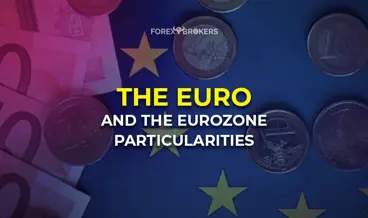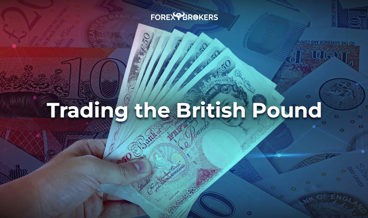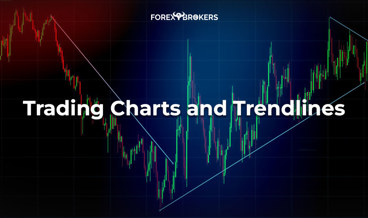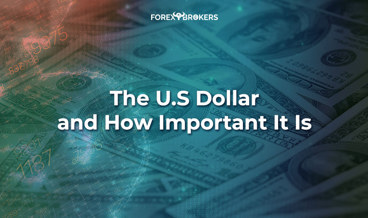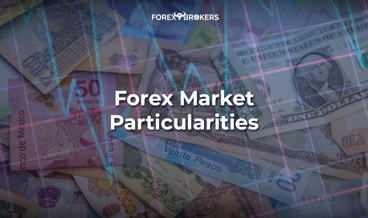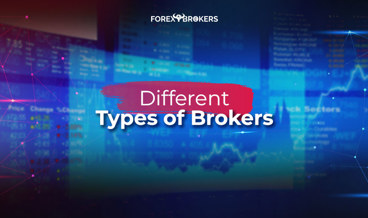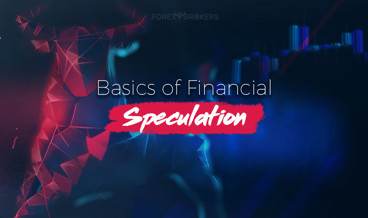One of the most secretive central banks worldwide, the Swiss National Bank (SNB) oversees setting the monetary policy for the Swiss franc (CHF). Both the SNB and CHF deserve special attention when trading in the financial markets.
Future articles in the rookie section of our trading academy will deal with both fundamental and technical analysis. The focus on the fundamental side is on central banks but not the SNB. In contrast, this article addresses both the SNB and CHF, serving as an introduction to the world of central banks by discussing the particularities of a (privately owned!) central bank in the middle of the European continent but in a neutral country from all points of view.
This article approaches the fundamentals of the Swiss economy and what to look for when searching for the right economic data, but it also looks at the role of CHF as a safe-haven currency, the efforts made by the SNB to avoid its uncontrolled appreciation, and what led to the event that almost destroyed the online trading industry – SNB dropping the artificial 1.20 rate on the EURCHF pair at the start of 2015.
Switzerland has a great economy that always had a significant problem – a strong currency. For this reason, the central bank, the SNB, is known as one of the most active central banks in the currency market. It regularly intervenes, selling the CHF, while most other market participants want exposure to the safe-haven status offered by it.
Get ready for an article that will guide you through what trading CHF means and how it helps to understand the SNB's actions and policies. In the end, you'll have a different review of the CHF currency pairs and think twice before trading them one way or the other.

The Particularities of the Swiss Economy
One of the things to master when trading currencies is fundamental analysis. While it includes global, macro interpretations, it also involves understanding the underlying principles of economic performance.
Because currencies show the economic strength of an economy, traders and investors spend a great deal of time identifying where the economy is heading next. They know that the central bank, with its team of researchers and economists, is doing the same thing. If investors interpret the economic performance correctly, as the central bank’s research team does all the time, trading the currency becomes easier.
However, it doesn’t guarantee a profit. The foreign exchange market may be the largest one in terms of daily turnover, but market participants have a variety of reasons to actively exchange currencies. What’s certain, though, is that the pricing and flows in all other financial markets are influenced by what happens in the currency market.
Coming back to the Swiss economy, it’s a free-market economy and one of the most advanced economies in the world. Boasting an innovative economy with a reliable service sector led by banking and financial services, Switzerland is an island of neutrality on the old continent, always attracting direct foreign investment and foreign private capital from around the world.
About 8% of Swiss exports are machinery, including computers, while perfumes and cosmetics make up about 1% of all its exports. In total, 10 export types make up about 85% of Switzerland’s total yearly exports – precious metals, pharmaceuticals, machinery, watches, organic chemicals, medical apparatuses, electrical machinery, plastics and perfumes, iron and steel products, and the number one Swiss export – gold!
Economic Data to Consider When Trading the Swiss Franc
With an export-oriented economy, Switzerland is the envy of many nations. Its famous neutrality gives it a safe-haven status both in the world of finances as well as in geopolitics.
For a better understanding of what matters for the Swiss franc, we must look at the key economic indicators in Switzerland, when they are released, and their standard interpretation. The economic evolution of the country is the top priority for the central bank, which moves the interest rate level based on not only the internal performance but also how the economy compares with other ones in the world.
Unlike in other economies, there are several different indicators traders use to interpret economic performance in Switzerland. Foreign currency reserves, the SECO forecast, the KOF barometer, and the Credit Swiss economic barometer are just a few examples of indicators and economic data specific to the Swiss economy. These indicators need to be considered when trading the Swiss franc.
Retail Sales
Released by the Federal Statistical Office in Switzerland, this indicator shows the inflation-adjusted sales at the retail level. Also called “real retail sales,” it is a gauge of consumer spending, the engine behind all economic performance.
The release excludes automobiles and gas stations, and traders only find out the actual number about 30 days after the month ends. The higher the number, the better for currency.

During the past 19 years (2000–2019), the retail sales indicator has averaged a positive of 0.13%, highlighting the economic performance of Switzerland's economy. At the other extreme, October 2008 showed a record of -4.3%, right at the beginning of the international financial crisis triggered by the housing bubble in the United States. On the other hand, right before the 2008 financial crisis, it dipped well into negative territory.
Manufacturing PMI
A survey of about 200 managers, the Manufacturing PMI, shows the economic health of the manufacturing sector. The line in the sand is the 50 level, acting like a bull/bear or expansion/contraction line.
Always released on the first business day of the month, the Manufacturing PMI is a leading indicator of economic health. Traders use it not only to interpret the current data but also to make an educated guess about essential trends that might develop. Often, the PMI release dips below the 50 level, but if not accompanied by weakness in other economic sectors, it won't have much of an impact on the currency's valuation.

For the last five months, though, the Manufacturing PMI in Switzerland has dipped below the 50 mark. Even earlier, it showed a declining trend, which explains why the SNB continues to keep the interest rate level well below zero, currently at -0.75%. Still, the average for the last 24 years shows a steady Manufacturing PMI value of 53.95, indicating the strong long-term performance of the Swiss manufacturing sector.
CPI
Inflation and inflation expectations offer reasonable indications of price stability and are part of the SNB mandate. The Consumer Price Index, or CPI, released in Switzerland shows the change in the value of the goods and services purchased by all consumers in the given period.
It is the earliest inflation data, released around six days after the previous month’s end. Because consumer prices account for the overall inflation, they are watched closely by the central bank in trying to fulfill the mandate of price stability.
Changes in inflation thus trigger a response from the central bank. Higher inflation leads to even higher interest rates and a higher value for the currency. On the other hand, lower inflation leads to lower interest rates and a depreciating currency.
In 1973, inflation in Switzerland reached an all-time high of 11.92%. On average, from 1956 to 2019, inflation reached 2.38%, which is closer to the central bank’s mandate of 2% to stimulate economic growth.
GDP
Showing the total value of goods and services produced in Switzerland, the gross domestic product, or GDP is a measure of economic activity. It typically shows the inflation-adjusted value of all goods and services produced.
For the last 38 years (1981–2019), the GDP in Switzerland has averaged a 1.77% annual growth, an impressive track record by all standards. As a primary gauge of economic health, the GDP is released quarterly, about 60 days after the quarter ends.
Foreign Currency Reserves
A unique piece of data coming exclusively from Switzerland, foreign currency reserves allow traders a look into the SNB’s currency market operations. After the EURCHF minimum exchange rate period, the SNB continues to be an active player in the market.
The level of foreign currency reserves shows the total value of those reserves held at the SNB, and if the actual figure is less than the forecast one, it is viewed as a positive development for the currency.
Unemployment Rate
A country with a meager unemployment rate, Switzerland averaged 3.23% unemployment between 1995 and 2019. Released about nine days after the month ends, the unemployment rate is a lagging indicator but an important one due to consumer spending being actively correlated with labor market conditions. The unemployment rate in Switzerland currently sits at 2.1%, one of the lowest in the world.
SECO Forecast
The State Secretariat for Economic Affairs (SECO) releases a quarterly forecast of the Swiss economy. The SECO forecast looks at employment, consumer spending, unemployment, and so on, and market participants respect their views.
The Federal Government Experts Group revises the expectations for the Swiss economy to the downside or the upside, depending on how the economy performs every quarter. The analysis goes deep into areas such as consumption expenditure, construction investment, and even government-related expenditure and investment.
Trade Balance
International trade has both benefits and costs. For a country or region (e.g., the eurozone), ideally, the exports exceed the imports.
The trade balance is the difference between the two. A trade surplus occurs when the exports exceed the imports. On the other hand, when the imports exceed the exports, the trade balance shows a trade deficit.
Some countries go to extreme lengths to protect their international trade. As many of our readers probably know, the United States, under Trump's administration, started a protectionist policy. Protectionism measures such as tariffs block free trade and its benefits, with many arguing in favor or against it.
It shouldn't surprise anyone that a country like Switzerland has a trade surplus. On average, it has shown a surplus for the last 69 years, with the highest trade surplus of almost CHF 3.5 billion recorded in September 2016. The data comes out monthly, in the second part of the month, showing the results for the previous month.
Of course, everyone is familiar with Swiss chocolate and Swiss watches, but Switzerland's exports are more than just that. On the top of the list sit gems and precious metals (gold, for instance, accounted for $64 billion in 2018 alone) and pharmaceuticals. These two categories combined account for 50% of the overall Swiss exports.
Credit Swiss Economic Expectations
This is a survey of about 30 economic investors and financial analysts about the economic outlook for the following six months. The outcome is interpreted against the zero level, with any number above zero showing optimism and any number below zero showing pessimism. Since July 2018, the surveys have demonstrated negative values, showing institutional investors' pessimism about the near-future performance of the Swiss economy.
KOF Barometer
The KOF economic barometer interprets over 200 economic indicators and tries to predict the direction of the Swiss economy for the following six months. It offers a complete view of the economy, covering areas like money supply, interest rate spread, housing, production, new orders, consumer and banking confidence, etc.
Since the 1970s, the KOF Swiss Economic Institute has published the barometer, although the methodology for calculating it has changed several times throughout the years. However, it remains one of the most trustworthy indicators for the Swiss economy and offers a complete view of what's happening inside one of the most performant economies in the world.
Swiss National Bank – A Central Bank Like No Other
Indeed a central bank like no other: The SNB is responsible for the monetary policy in Switzerland. As an independent structure, it has, to say the least, an exciting organization. It has not one but two head offices, six representative offices, and fourteen agencies.
In total, it employs around a thousand people and even has an agency in another country – Singapore. How come? Because it has an extensive portfolio with exposure to Asian currencies, it seeks to better manage it by having a presence in the region.
Founded in 1906 and beginning operations in the summer of 1907, the SNB is a joint-stock company with registered shares listed on the stock exchange. Private individuals hold a little over 40%, and the rest belongs to public shareholders (e.g., cantonal banks).
From the start, we have something special: No other prominent central bank like the SNB has private individuals as shareholders. This seems to generate a conflict of interest because the bank strives to operate for a profit no matter what, even to the detriment of the public shareholders. Yet, a closer look at some other central banks reveals that they also redistribute their profit to national or federal banks. However, there are no shares listed on the public exchanges – this is a unique characteristic of the SNB.
Many of you are probably wondering who even cares what the status of the SNB is, but these little pieces of information explain the active role of the SNB in the markets. This is a central bank that is extremely active in the market, intervening to support the economy and making no secret about its intentions. Yet, the Swiss Constitution grants the independence of the institution as a central bank to set the monetary policy in Switzerland.
More About the SNB
Before getting too excited and jumping on buying all the shares you can get from the Swiss Stock Exchange (SIX), you should know that private investors can only hold 100 shares of the SNB. The shares have a nominal value of CHF250, but at the time of this writing, shares are trading at a little over CHF5710.
As such, any private individual or entity, whether from Switzerland or abroad, can buy a maximum of 100 shares in the SNB for a little over half a million CHF. Not too shabby!
There’s a bank council that oversees how the SNB conducts business. It has eleven members, and five of the eleven are appointed by the shareholder meetings. The bank council is not to be confused with the governing board responsible for setting the monetary policy.
Unlike other central banks, the SNB announces its policy on a quarterly basis, not monthly or every six weeks, as is normal in other jurisdictions. In doing so, the SNB tries to avoid the lagging information provided by some economic indicators and to interpret the changes that matter for the economy correctly.
SNB Monetary Policy
Like any major central bank these days, the pillar of the monetary policy set by the SNB is price stability. The SNB delivers price stability by considering economic developments and a medium-term inflation forecast.
The SNB releases the monetary policy assessment four times a year, in March, June, September, and December. It explains the reasons for its decision in a release called the Quarterly Bulletin, closely watched by traders due to its implications on the value of CHF.
The 2008 Financial Crisis and the SNB’s Struggles
As an element of the SNB monetary policy, the policy rate gets all the attention. During the 2008 financial crisis, the SNB faced a massive international inflow into CHF. The currency, viewed as a safe haven, appreciated rapidly, especially against the euro.
Due to its proximity, the European Union is a strategic economic partner for Switzerland. A higher CHF and a lower EUR were a lousy combination for Switzerland's exports – around 45% worth of Swiss goods are shipped to European countries every year, most of it to the European Union.
The objective of a stronger currency wasn’t in the SNB’s plans, as it negatively affects exports. Therefore, the SNB intervened, trying to stop the CHF appreciation.
In September 2011, it enforced a minimum exchange rate of 1.20 CHF per one EUR. In other words, it pledged to buy limitless quantities of CHF at 1.20, artificially sustaining the exchange rate to support the country’s exports.
In the currency-trading industry, the minimum exchange rate for EURCHF quickly became known as "the peg." The EURCHF pair became pegged at the 1.20 level, changing the landscape for the entire Forex dashboard. Suddenly, CHF wasn't a free-floating currency anymore, with the SNB a key market player among other market participants.
What was first seen as a brilliant idea turned into a nightmare. No one expected the eurozone crisis that followed the Greek saga (i.e., Greece "cheated" on its financial macro data reported to the eurozone, and when the deception was revealed, the country was already bankrupt) and the imminent euro implosion.
- Negative Rates
Because of the eurozone’s transition from bad to worse, the pressure on the EURCHF pair mounted. In the first years of maintaining the minimum exchange rate at 1.20, the price even rose to 1.24 or beyond, but with clear pressure on all spikes.
No one wanted to own the euro, and CHF was an interesting alternative due to its safe-haven status and exposure to European economies. However, selling the EURCHF pair meant fighting the SNB. It wasn't unprecedented, as Soros had fought the Bank of England years ago, but still, front-running a central bank in the 21st century isn’t something you see every day. Nonetheless, some traders did it.
A wave of change at the helm of the European Central Bank (ECB) forced the SNB to take drastic measures so severe that only a few years before, they had been considered forbidden for the monetary world.
The new ECB President, Mario Draghi, made it clear the ECB would reverse the course of the previous monetary policy under the Trichet governance. More precisely, the ECB was ready to cut the interest rate level. That meant a lower euro and difficulty for the SNB to defend the peg.
The SNB decided to move the interest rate on sight deposit account balances to -0.25%. It wasn’t enough. Only a month later, the SNB announced the removal of the minimum exchange rate for the EURCHF pair.
The concept of negative rates is relatively new to monetary policymakers. Only a few years ago, it was forbidden, as there was no precedent of the effects it would have on economic performance.
But the times changed, and fast. Many central banks around the world nowadays use negative rates as normal, standard policy. While all of them acknowledge the negative side effects, the positives in the short run outweigh them.
Breaking the EURCHF Peg
For a little over three years, the SNB maintained that minimum exchange rate. Eventually, forced by market developments, it admitted defeat, setting CHF free again.
What followed almost destroyed the online trading industry. Brokers didn't know why there were suddenly no quotes on the CHF pairs. The market simply disappeared, not only on the EURCHF cross but on all CHF pairs.
When the first quotes appeared, the damage was obvious: EURCHF opened below 0.9 from the 1.20 floor, spelling terrible news for all the retail traders who had bought EURCHF with a stop-loss just below the 1.20 level, trusting the SNB to keep protecting the pair.
The problem was that brokers do not guarantee a stop-loss order unless there is a market. With the market disappearing due to the SNB decision, the brokers couldn’t execute the stop-loss orders. Suddenly, all retail traders with long positions needed to come up with extra funds to cover the loss.
Brokers, however, realized that this was impossible due to excessive losses and stepped in. Almost overnight, they erased the negative balances and took the losses on their balance sheets. From that moment on, negative balance protection became one of the features offered by brokerage houses.
Some retail traders did get burned, and some brokers did go bankrupt. But some traders also front-ran the SNB and made a fortune by merely understanding the forces behind the minimum exchange rate mechanism and its weaknesses.
As for the SNB, it revealed losses of tens of billions of CHF due to the 1.20 EURCHF peg. Before jumping in and declaring a defeat for the SNB to the market, it is fair to give the SNB credit. We don’t know the impact a higher CHF would have had on the Swiss economy if the SNB hadn’t imposed the minimum exchange rate.
Further into Negative Rate Territory
In January 2015, the SNB announced a further lowering of the interest rate to -0.75%, currently corresponding to the SNB policy rate. The negative rate introduced in December 2014 is a monetary instrument per se, sitting alongside repo transactions and other monetary policy instruments.
No one knows how long the SNB will keep the rates in the negative territory. But one can only wonder why there is a need for negative rates when the economy is performing relatively well and what the SNB will do in the next downturn.
If history tells us anything, it’s that central banks have the ability to create new policy tools out of thin air. Just as negative interest rates were unimaginable a few years ago and are now the norm, new monetary policy developments are still possible.
The side effects of negative rates are seen in the banking sector. The profitability of banks is strongly affected, and the financial services industry plays a crucial role in Switzerland’s economic performance. However, so far, the industry has performed rather well, making the SNB confident that it is running the right monetary policy.
If it isn’t yet obvious why the SNB is a special central bank, the following should make it clear: To this day, the SNB openly admits it intervenes in the currency market, mostly to devalue CHF.
In other words, from this moment on, every time you trade a CHF pair, remember that somewhere on the other side of the market, an entity with far greater resources than all retail traders combined is watching the CHF rate closely, ready to intervene anytime.
Tips and Tricks When Trading CHF Pairs
The CHF pairs have decent liquidity and volatility levels, making them attractive to retail traders coming to the market to speculate. An interesting thing to note here: Because the SNB currently keeps rates well below the zero level (-0.75%), the interest rate differential between CHF and all other currencies results in a positive swap for holding long positions overnight.
In other words, there's a positive carry trade for holding long positions on all CHF pairs for more than one trading day. Scalpers may not be interested in such a detail, but swing-trading strategies benefit from keeping long positions. However, shorting the CHF pairs is expensive, especially if you’re keeping the positions open for a more extended period.
The most liquid currency pair is USDCHF. For a long time now, it has traded around parity (i.e., 1), showing an equal value between USD and CHF despite the huge interest rate differential between the two currencies and the divergent monetary policies of the two central banks. While the SNB kept the interest rate well into the negative territory, the Fed in the States hiked theirs many times, bringing the federal funds rate as high as 2.5%. The Fed recently cut (for the second consecutive time in 2019 so far) back to 2% as a midcycle adjustment, but the difference remains enormous.
By keeping the interest rate so low, the SNB effectively stimulates traders and investors to sell CHF, lifting the pressure on the currency and limiting the inflows. It offers a competitive advantage for Swiss producers, as the currency is backed by the SNB’s decisions, even though such actions aren't viewed positively by all countries.
For instance, since Trump’s election in the United States, protectionism has been on the rise. Not only once has Trump called for the Fed to cut rates to reduce the interest rate gap with other countries and restore competitiveness for U.S. exports.
USDCHF
Particularities:
- the most liquid CHF pair
- had traded around parity for years
- carries a positive swap for long positions
- very tight spread, like the one registered on EURUSD, one of the lowest of the entire Forex dashboard with all brokers
- highly correlated with the EURUSD pair (negative correlation, meaning it falls when EURUSD rises and moves to the upside when EURUSD falls)
EURCHF
Particularities:
- a cross-pair subject to the SNB’s interventions
- higher spread than USDCHF
- not that liquid, retail traders wanting to sell or buy in large volumes suffer from low liquidity levels at some moments during the trading day
- smaller positive carry for long positions than with USDCHF, as the ECB also has negative rates, albeit not as low into the negative territory as the SNB
- moves in tight ranges, suitable for range trading
GBPCHF
Particularities:
- very liquid
- wider spreads than with other currency pairs
- has a positive swap for long positions with most brokers
- the cross pair that gapped the most after the SNB dropped the EURCHF 1.20 peg in January 2015
- reflects the differences between the United Kingdom and Swiss economies but mostly between the Bank of England and the SNB
AUDCHF
Particularities:
- wide spreads during important economic events
- even wider spreads at the end of the trading day when positions rollover
- suitable for carry trading, as the current interest rate differential between the RBA and the SNB is positive (the RBA’s cash rate is 1%, while the SNB keeps the rates negative at -0.75%)
CADCHF
Particularities:
- an illiquid cross pair
- suitable for carry trading
- ideal for range trading using oscillators
CHFJPY
Particularities:
- one of the most unpredictable and challenging currency pairs to trade because both currencies enjoy a safe-haven status
- in risk-off environments, flows pour into JPY and CHF, making CHFJPY challenging to predict
- more suitable for technical trading than fundamental
Conclusion
An emblematic currency of the Forex dashboard, CHF reacts to the SNB’s decisions and to geopolitical events. With the SNB’s pledge to keep the interest rates negative for as long as necessary to help the country’s economy, look for the CHF to tend to move lower, helped by the SNB’s efforts.
On the other hand, the Fed in the United States has always said that it doesn’t think of negative interest rates as part of its toolbox. That being said, the implications are that the positive carry trade for going long on USDCHF will still exist in the foreseeable future.
But there's more to trading and understanding CHF than just interpreting the interest rate differential between the SNB's rate and those of other central banks. Risk-off events play an essential role, too.
For example, whenever there are tensions in a region (e.g., the Middle East drone attack on a Saudi oil production facility or the North Korean missile crisis), CHF is one of the first currencies to react. Suddenly, investors don't care anymore about interest rates and positive carry, instead looking for shelter by buying CHF.
To sum up, trading the CHF pairs is more complicated than trading other currencies on the Forex dashboard. With the SNB always on the watch, you're never sure when a currency intervention will take place.
Nevertheless, it is of tremendous importance that traders understand the role of CHF in the currency market. After all, it almost destroyed online trading as we know it today when the SNB dropped the minimum exchange rate on the EURCHF cross-pair.
The next article completes the Newcomer section of this trading academy and covers the euro and the eurozone's particularities. A fascinating project with a 20-plus-year-long history, the euro is a pillar of the currency market.


